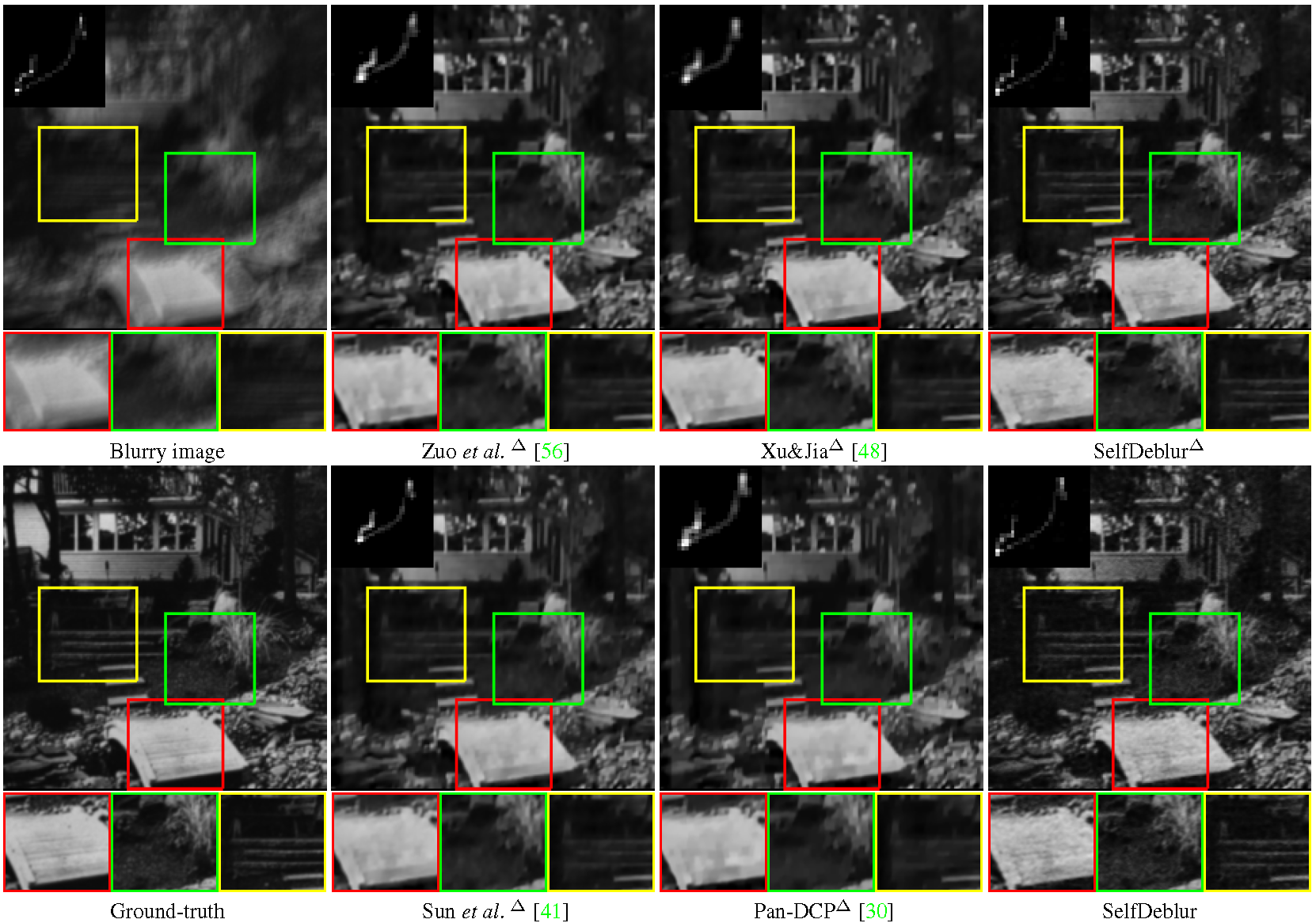Neural Blind Deconvolution Using Deep Priors
Blind deconvolution is a classical yet challenging low-level vision problem with many real-world applications. Traditional maximum a posterior (MAP) based methods rely heavily on fixed and handcrafted priors that certainly are insufficient in characterizing clean images and blur kernels, and usually adopt specially designed alternating minimization to avoid trivial solution. In contrast, existing deep motion deblurring networks learn from massive training images the mapping to clean image or blur kernel, but are limited in handling various complex and large size blur kernels. To connect MAP and deep models, we in this paper present two generative networks for respectively modeling the deep priors of clean image and blur kernel, and propose an unconstrained neural optimization solution to blind deconvolution. In particular, we adopt an asymmetric Autoencoder with skip connections for generating latent clean image, and a fully-connected network (FCN) for generating blur kernel. Moreover, the SoftMax nonlinearity is applied to the output layer of FCN to meet the non-negative and equality constraints. The process of neural optimization can be explained as a kind of "zero-shot" self-supervised learning of the generative networks, and thus our proposed method is dubbed SelfDeblur. Experimental results show that our SelfDeblur can achieve notable quantitative gains as well as more visually plausible deblurring results in comparison to state-of-the-art blind deconvolution methods on benchmark datasets and real-world blurry images. The source code is available at https://github.com/csdwren/SelfDeblur
PDF Abstract CVPR 2020 PDF CVPR 2020 Abstract


